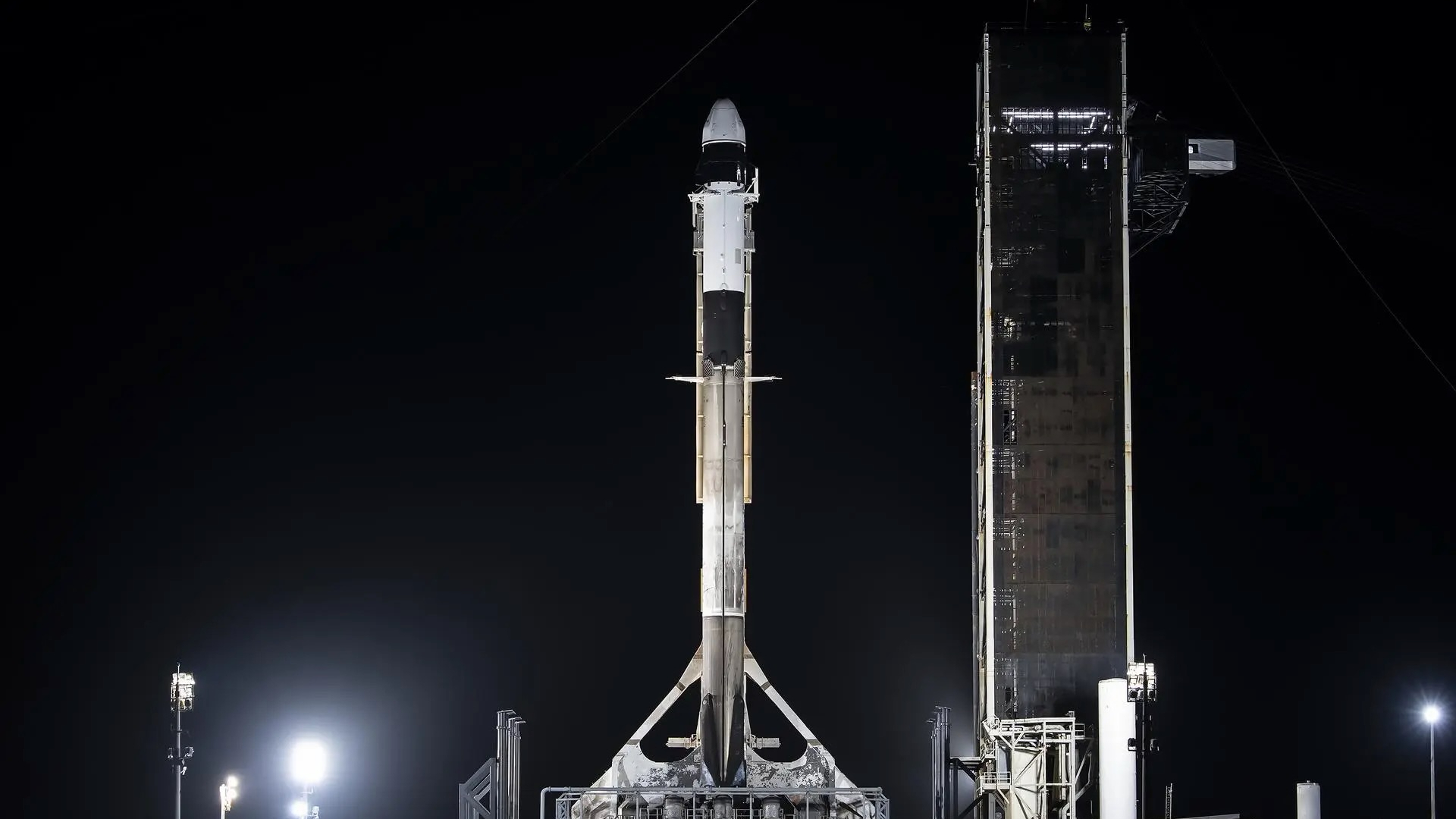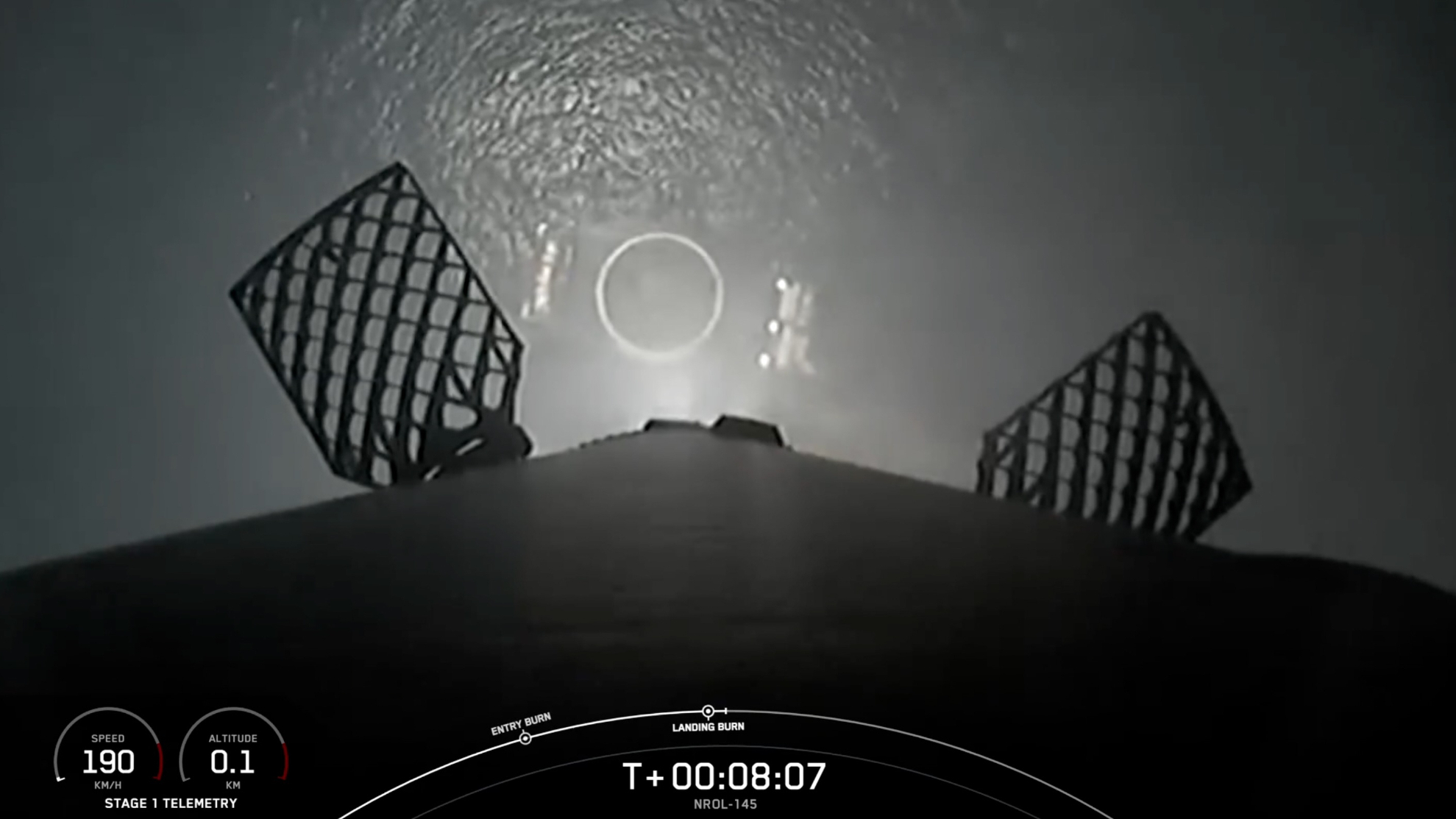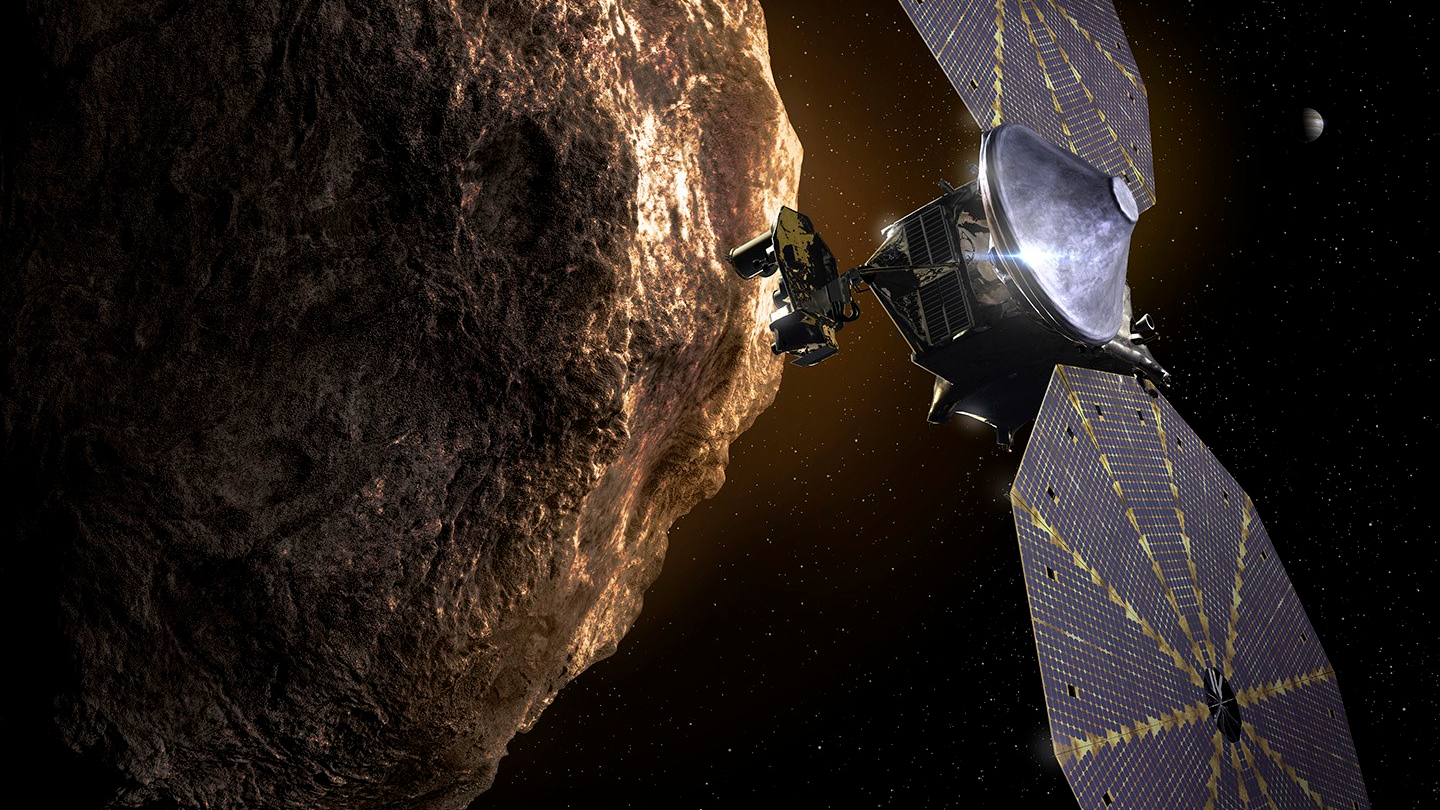Apollo 11 Moon Memorabilia Sells for Millions in 50th Anniversary Auctions
Three Apollo 11 moonwalk tapes sold for $1.82 million!

The 50th anniversary of the first moon landing inspired more than just memories to come forward, but also millions of dollars for memorabilia from the Apollo 11 mission.
Three high profile auctions organized in celebration of the golden anniversary offered up thousands of items associated with the 1969 journey to Tranquility Base and two of those lots elicited bids into the seven figures. But not everything that was estimated to sell for millions successfully found a buyer.
"Fifty years ago, we achieved the world's greatest human accomplishment. Today, space exploration continues to capture the hearts and imagination of people around the world," said Cassandra Hatton, vice president and senior specialist of Sotheby's Books & Manuscripts Department in New York, in a statement. "We are truly over the moon about our outstanding results."
In addition to Sotheby's, space exploration-themed sales were also held by Heritage Auctions of Dallas and Christie's in New York during the Apollo 11 50th anniversary week.
More Apollo coverage:
- Relive the Apollo 11 Moon Landing Mission in Real Time
- Apollo 11 at 50: A Complete Guide to the Historic Moon Landing
- Apollo 11 Moon Landing Giveaway with Simulation Curriculum & Celestron!
'Go' to the video tape
Sotheby's led off its latest Space Exploration sale with an item that it described as "the best surviving NASA videotape recordings of the Apollo 11 moon landing."
The three reels of 2-inch videotape, which hold an incomplete but contemporary to the mission copy of the July 20, 1969 first moonwalk by Apollo 11 astronauts Neil Armstrong and Buzz Aldrin, sold for $1.82 million on Saturday (July 20). Three bidders competed for the reels for nearly five minutes on the phone and online.
Get the Space.com Newsletter
Breaking space news, the latest updates on rocket launches, skywatching events and more!
Sotheby's did not identify the winning bidder.
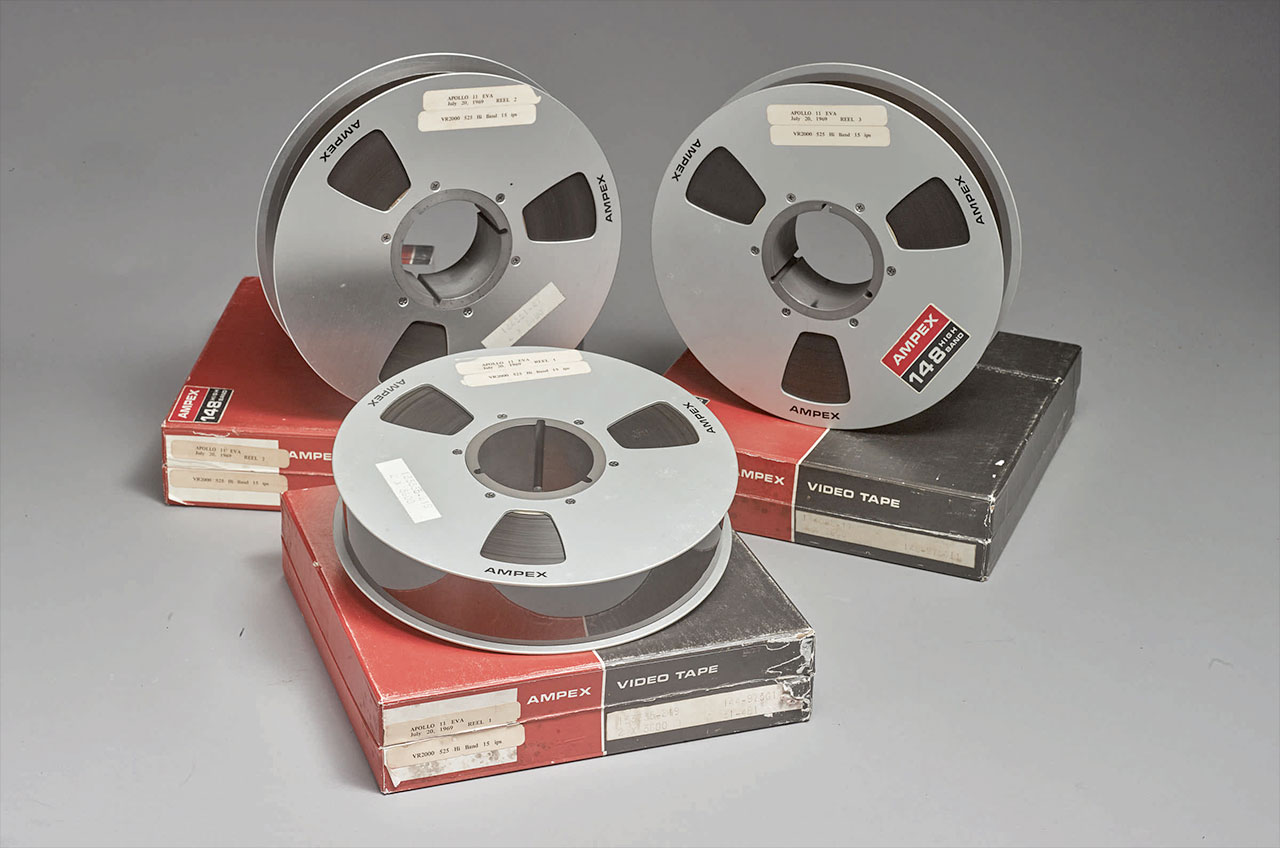
The final sale price was 8,000 times the amount that Gary George originally paid for the reels among a lot of more than 1,000 magnetic tapes offered in a 1976 government surplus auction. George, then a NASA intern, purchased the tapes without knowing the Apollo 11 footage was included, but after finding the labeled reels, held onto to them for more than 40 years.
Some of the media coverage leading up to Sotheby's sale conflated George's tapes, which contain footage converted for TV broadcast, with the telemetry tapes that NASA was unable to find in a highly-publicized 2005 search. The confusion resulted in the space agency issuing a statement before the auction that said, in part, that the tapes up for bid "contain no material that hasn't been preserved at NASA."
Further, film archivists who have worked extensively with the Apollo film record took issue with Sotheby's claim that George's tapes were the "earliest, sharpest and most accurate surviving video images of man's first steps on the moon," pointing to other sources for the same format and vintage moonwalk footage.
Still, the tapes achieved Sotheby's pre-auction estimate of $1 to $2 million.
Other Apollo 11-related highlights from the sale included a label removed from a Hasselblad film magazine that used on the surface of the moon for $225,000; a collection of 20 Apollo Firing Room control panels from NASA's Kennedy Space Center Launch Control Center for $212,500; and a group of 11 pages from the flown Apollo 11 flight plan and data file — consigned directly by Aldrin, reversing a decision he made in 2013 to retain his Apollo 11 items — for a total of $739,375.
'Gold'-en anniversary
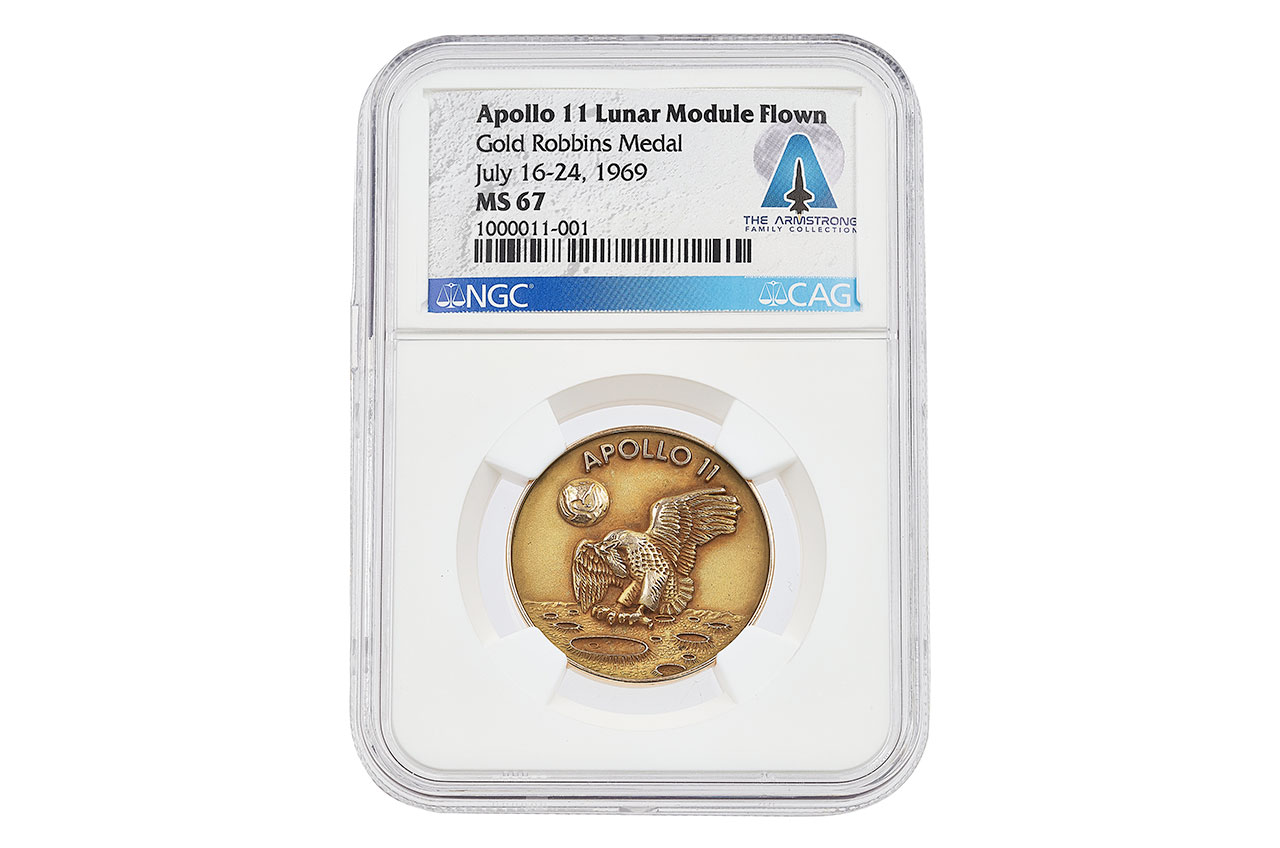
Heritage Auctions concluded its three-part offering of the Armstrong Family Collection with a sale that included a gold medallion flown to the moon and back by the Apollo 11 commander.
The Robbins medallion, one of only three 14-karat gold examples carried on the historic first moon landing mission, sold for $2,055,000 on Tuesday (July 16), the 50th anniversary of the Apollo 11 launch.
"The response from admirers of mission commander Armstrong's contribution to humanity has been simply overwhelming," said Michael Riley, director of space exploration at Heritage, in a statement.
The Robbins medallions, referred to as such by collectors after the company that minted them, were traditionally only available to the astronauts. Silver medallions could be purchased by any astronaut, but the gold version was only available to the crew members for which the medallion was issued.
Recent sales of gold Robbins medallions from other Apollo missions have sold in the mid- to high-five figures. Aldrin's and Collins' gold Robbins medallions are in private collections.
Other Apollo 11 performers from Part 3 of the Armstrong Family Collection included fragments of the Wright brothers' 1903 Flyer that Armstrong flew to the moon for $143,750 and $150,000; the largest-size American flag flown aboard Apollo 11 for $137,500; and Armstrong's personal copy of NASA's Preliminary Apollo 11 Flight Plan for $112,500.
Shooting for the moon … and missing
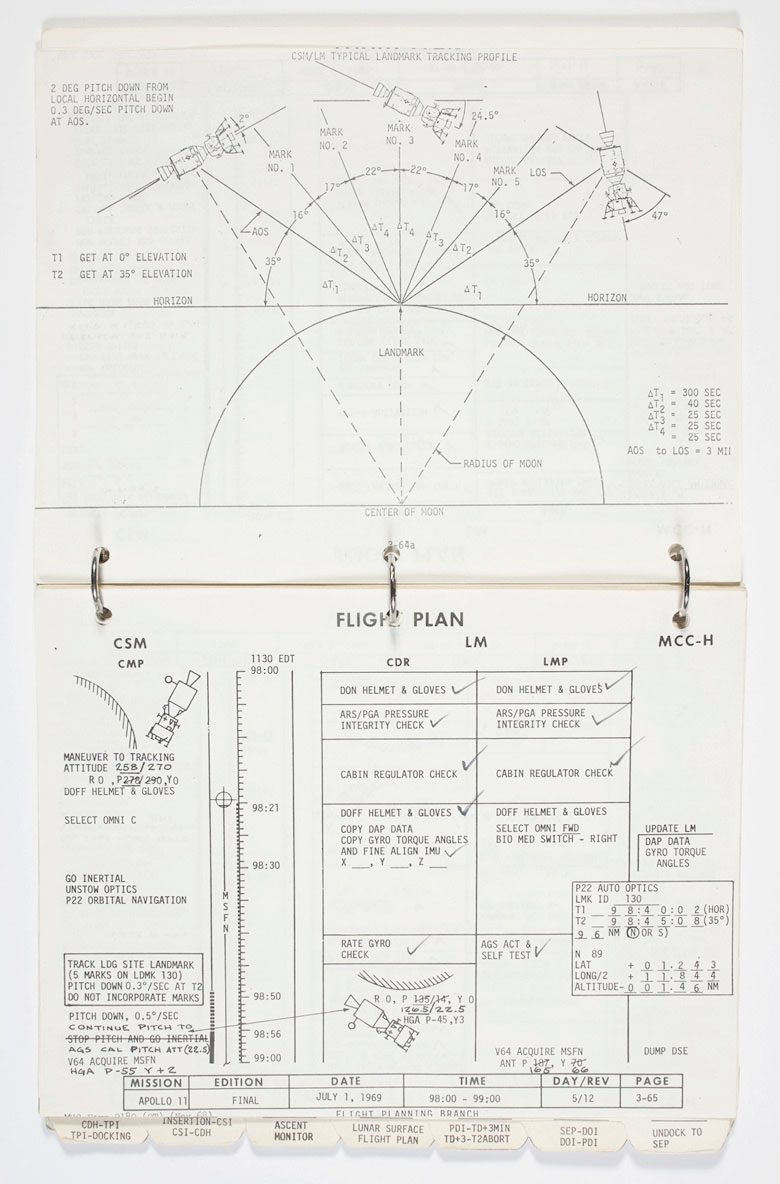
The increased attention driven by the 50th anniversary was not enough though, to launch every million-dollar Apollo 11 artifact to a successful sale.
Christie's Books & Manuscripts promoted its "One Giant Leap: Celebrating Space Exploration 50 Years After Apollo 11" auction on Thursday (July 18) by highlighting what it called "the star of the sale," the Apollo 11 lunar module timeline book. Used and annotated by Armstrong and Aldrin during the first lunar landing, the manual featured the first writing by a human being on a celestial body other than Earth.
Christie's had estimated the timeline book to sell for $7 to $9 million, 30 times more than what it originally sold for in 2007 ($253,000). The lot, however, failed to attract a single bid.
Further, out of the 180 lots Christie's offered, one third went unsold. The sale as a whole raised less than $1 million ($907,000).
The sale was not without some highlights though, with a flown Apollo 11 flight plan page selling for $62,500; a 1971 NASA lunar planning chart for $37,500; and an Aldrin-inscribed 16-by-20-inch photo selling for $13,750.
- How the Apollo 11 Moon Landing Worked (Infographic)
- NASA's Historic Apollo 11 Moon Landing in Pictures
- Reading Apollo 11: The Best New Books About the US Moon Landings
Follow collectSPACE.com on Facebook and on Twitter at @collectSPACE. Copyright 2019 collectSPACE.com. All rights reserved.
Join our Space Forums to keep talking space on the latest missions, night sky and more! And if you have a news tip, correction or comment, let us know at: community@space.com.

Robert Pearlman is a space historian, journalist and the founder and editor of collectSPACE.com, a daily news publication and community devoted to space history with a particular focus on how and where space exploration intersects with pop culture. Pearlman is also a contributing writer for Space.com and co-author of "Space Stations: The Art, Science, and Reality of Working in Space” published by Smithsonian Books in 2018.In 2009, he was inducted into the U.S. Space Camp Hall of Fame in Huntsville, Alabama. In 2021, he was honored by the American Astronautical Society with the Ordway Award for Sustained Excellence in Spaceflight History. In 2023, the National Space Club Florida Committee recognized Pearlman with the Kolcum News and Communications Award for excellence in telling the space story along the Space Coast and throughout the world.
It's always a pleasure to meet a new Lego Star Wars set, as Jango Fett’s Firespray-Class Starship drops in for Star Wars Day
'I Have No Mouth, and I Must Scream' celebrates 30 years with a console port, ready to traumatise a whole new generation with its tales of a mad AI god

